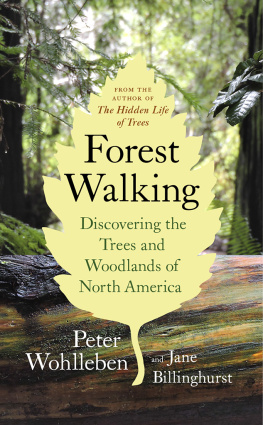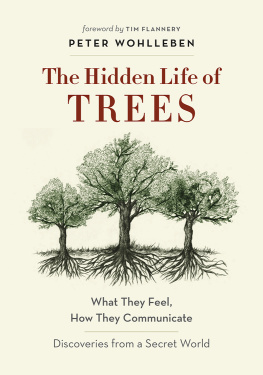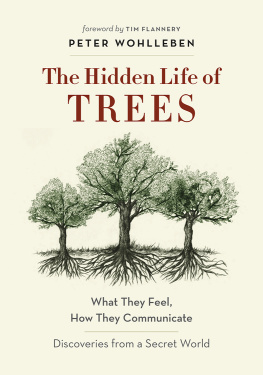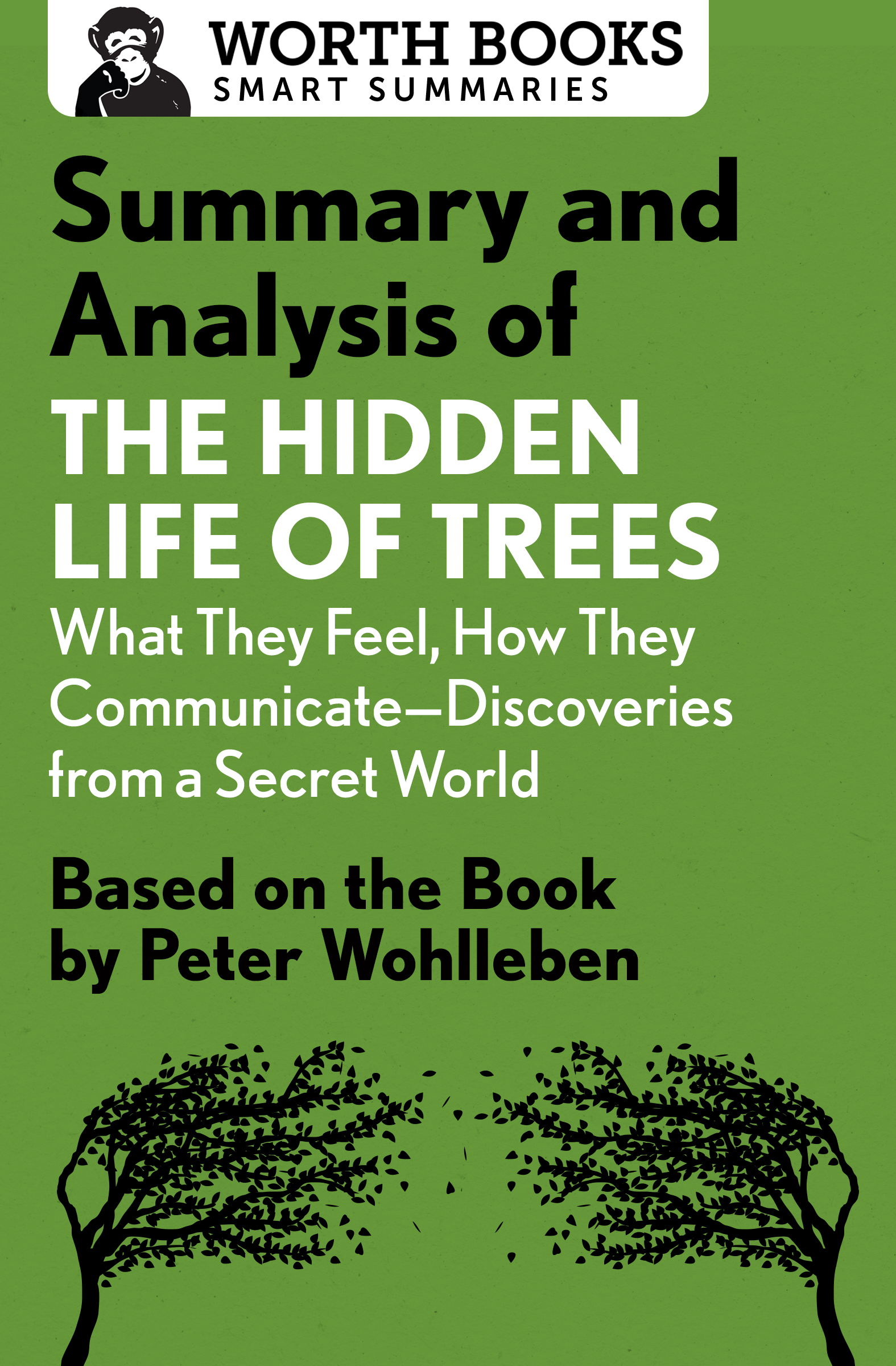Summary and Analysis of
The Hidden Life of Trees
What They Feel, How They CommunicateDiscoveries from a Secret World
Based on the Book by Peter Wohlleben

Contents
Context
Trees, especially old-growth trees, are essential to life. They filter carbon dioxide and pollutants from the air, and are necessary for moving water inland from the oceans. They are also the best defense against global climate change. Peter Wohllebens The Hidden Life of Trees gives the reader a deeper understanding of this vital group of organisms, and explains what needs to be done to bring more old-growth trees back.
When Wohlleben first became a forester, he looked at trees only interms of their value to the lumber market. Two things changed that. He began showingvisitors around the woods, and this got him to pay more attention to the trees as hestarted to notice more details about them. Around the same time, Aachen Universitybegan doing research in the forest, and Wohlleben learned that trees have memories,experience pain, and nurse their children. This changed the way he treated the treesin his care, including abandoning the use of heavy machinery.
Wohlleben wrote his book to encourage readers to look more closely at forests, the way he now does, and to introduce them to the wonders he discovered as he learned more about trees.
Overview
People dont often think of trees as having intelligence or emotions, perhaps because trees move on such a different timetable, their reactions are so slow that they appear inanimate. The Hidden Life of Trees reveals the truth. A forest is almost like a herd of animals. The trees form a society, and they communicate through a language of chemical signals that they can use to warn one another of dangers, such as an insect attack. If a member of the society is sick, the other trees will come to its aid by sending sugar and nutrients through a network of interconnected roots and fungi. Mother trees nurse their offspring the same way.
Like animals, trees have memories. They are able to compare the amount of daylight from one day to the next so they know when to let their leaves fall. They have the ability to learn. If they suffer through a dry spell, they will conserve water from then on, even if there is plenty available. Because they share important characteristics with animals, author Peter Wohlleben suggests that it is time to give plants the rights we have already given animals.
Caring for trees isnt only a moral choice, its in humanitys best interest. Humans need trees to survive. Trees in forests act as a water pump, taking water vapor that blows in from the ocean and transfers that water, forest by forest, deeper into the interior of inland regions. Without coastal forests, those inland regions would dry out. Most important of all, trees, specifically old-growth trees, are crucial in the balance of the global carbon cycle, which influences global climate.
Summary
1. Friendships
Scientists have discovered that trees in forests are linked by fungal networks, or interconnected roots that allow them to exchange sugar and by which they can communicate. This provides benefits to each member of the forest. By living in a group, each tree maintains moist soil, a suitable microclimate, and shelter from wind and rain. A tree also benefits from having nearby trees that can help it with energy when it is stressed. Planted trees arent able to receive this kind of community assistance because their roots are damaged during planting and cant form the necessary network.
Need to Know: Trees form friendships and these friendships help them stay healthy and live longer. The whole forest benefits when the trees care for each other, because a colony of healthy trees means a better ecosystem for all.
2. The Language of Trees
A tree passes information, such as the presence of insect or fungal invaders, along to neighboring trees. Transmitting these alerts allows other trees to prepare their defenses. Chemical signals are released into the air, and they are passed between trees via their interconnected roots and the network of fungus that spreads between them under the ground. Electrical signals are also sent through this system, what scientist Dr. Suzanne Simard calls the wood wide web. Trees also have the ability to communicate with other species, such as when they produce the blossoms and sweet odors that attract bees for pollination.
Need to Know: Trees have a language. Instead of words, they use chemical and electrical signals sent through the air or through an underground system of roots and fungus to communicate with other trees and species.
3. Social Security
Traditional forestry assumes that it is better to grow trees with lots of space between them because it gives each tree a lot of sunlight and water. But researchers at the Institute for Environmental Research at rwth Aachen found that beech trees synchronize their rate of sugar production so that all trees are producing sugar at the same rate. They do this by sharing sugar with each other through their network of roots and fungus. If trees are felled to give the remaining trees more room, the trees that are left are on their own, without the network to exchange sugar. Some have trouble surviving. The mutual assistance trees provide each other is consistent with natural selection for individual fitness because each tree helps the others survive and thrive.
Need to Know: Trees have their own version of social security. A tree that is getting plenty of sun and water and is making more than enough sugar can share with trees that dont have ideal growing conditions. All the trees benefit, because a forest where all the trees are healthy creates more protection from heat and wind, and because if one of the strongest trees gets sick, it can rely on the trees around it for assistance.
4. Love
Deciduous trees carefully plan when they will reproduce based on the levels of their energy reserves, and they communicate with neighbor trees so that they all reproduce at the same time. They synchronize the years they reproduce, which for this species involves producing and releasing seeds. Only producing seeds in certain years helps protect the seeds from herbivores. For example, deer and boar love to eat the seeds in acorns and beechnuts. When trees stop production of these foods, it decreases the populations of these herbivores, increasing the trees chances of successful reproduction in the next cycle. Another advantage of deciduous trees reproducing in sync is that the genes from many trees will be mixed, preventing inbreeding.
Trees have several strategies for dispersing pollen and encouraging genetic diversity, including scattering pollen via insects or in the wind. In some species, each particular tree only has one sex. Other types of trees have male and female blossoms that open at different times of the year to prevent self-pollination. A bird cherry tree is actually able to determine the genetic makeup of pollen and block its own pollen from reaching an egg.
Need to Know: Deciduous trees dont reproduce every year, which helps limit the populations of herbivores that feed on their seeds. In contrast, coniferous trees usually reproduce annually. Although some birds are able to eat the seeds inside these trees cones, herbivores arent the same threat as they are to deciduous trees. All trees have strategies to promote genetic diversity, which makes the trees healthier.
5. The Tree Lottery
Like effective companies or well-organized families, trees budget their energy. Creating blossoms consumes an immense amount of energy. Species that blossom annually carefully adjust their energy use over the course of the year, while those that blossom periodically need years of recovery after the enormous energy used for bud production. During their blossoming year, these trees are vulnerable to insect infestation because they dont have the energy to put up their usual defenses.













